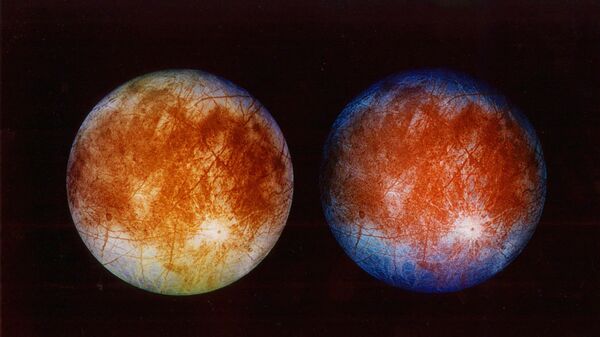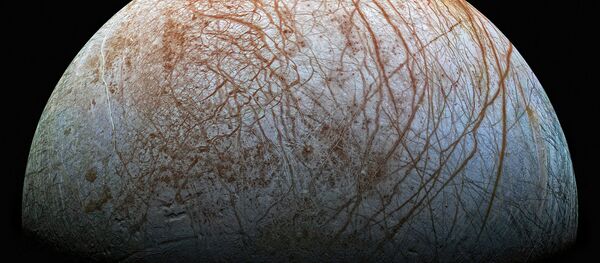Europa's atmosphere is oxygen-based, but researchers have long since suspected that the celestial body also produces hydrogen, which either freezes or escapes the moon's gravity.
Lorenz Roth, of Stockholm's KTH Royal Institute of Technology, studying Europa with the HST using an ultraviolet lens, discovered a large cloud of hydrogen surrounding the moon, confirming the hypothesis.
"The main goal of the observing campaign was actually finding localized signals from water vapor in the ultraviolet hydrogen emission. Yet we found a widely extended and homogeneous cloud of hydrogen around Europa," Lorenz told Phys.org.
"The amount of hydrogen we observed was actually expected to exist and ultimately originates from the erosion of Europa water ice surface," he said. Only spaceborne telescopes could have made this discovery, as Earth's atmosphere would have absorbed the ultraviolet light necessary to make the distinction.
Europa is believed to be composed of a rocky center, an enormous underground ocean, and an icy crust. It is famous for its surface, which resembles a well-worn ice rink, with enormous scratches that line the ice.
Being covered in water, scientists believe it to be one of the most likely places in the solar system for life to have formed. It is also seen as one of the best candidates for human colonization, as it has an oxygen atmosphere, although the amount of oxygen on the surface is unknown.
In 2015, NASA confirmed the Europa Multiple-Flyby Mission with a planned launch in 2022 to map the moon's atmosphere and surface as well as search for the presence of life or its components.


